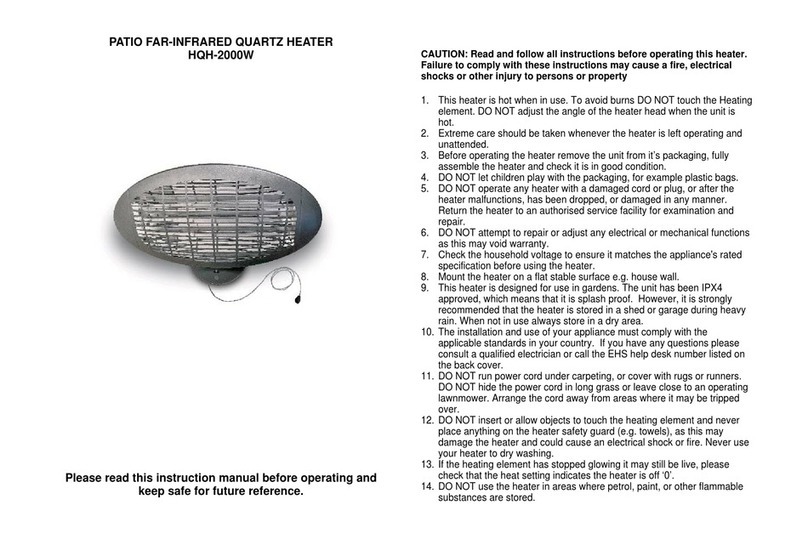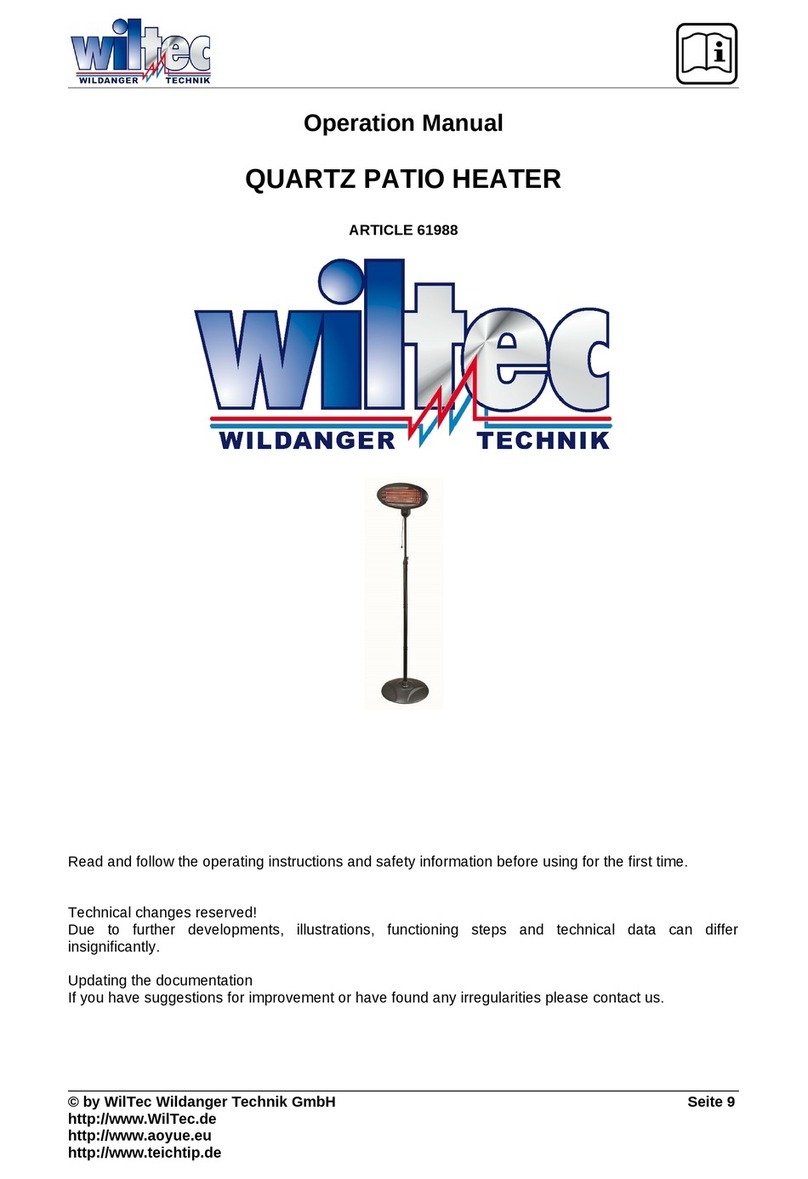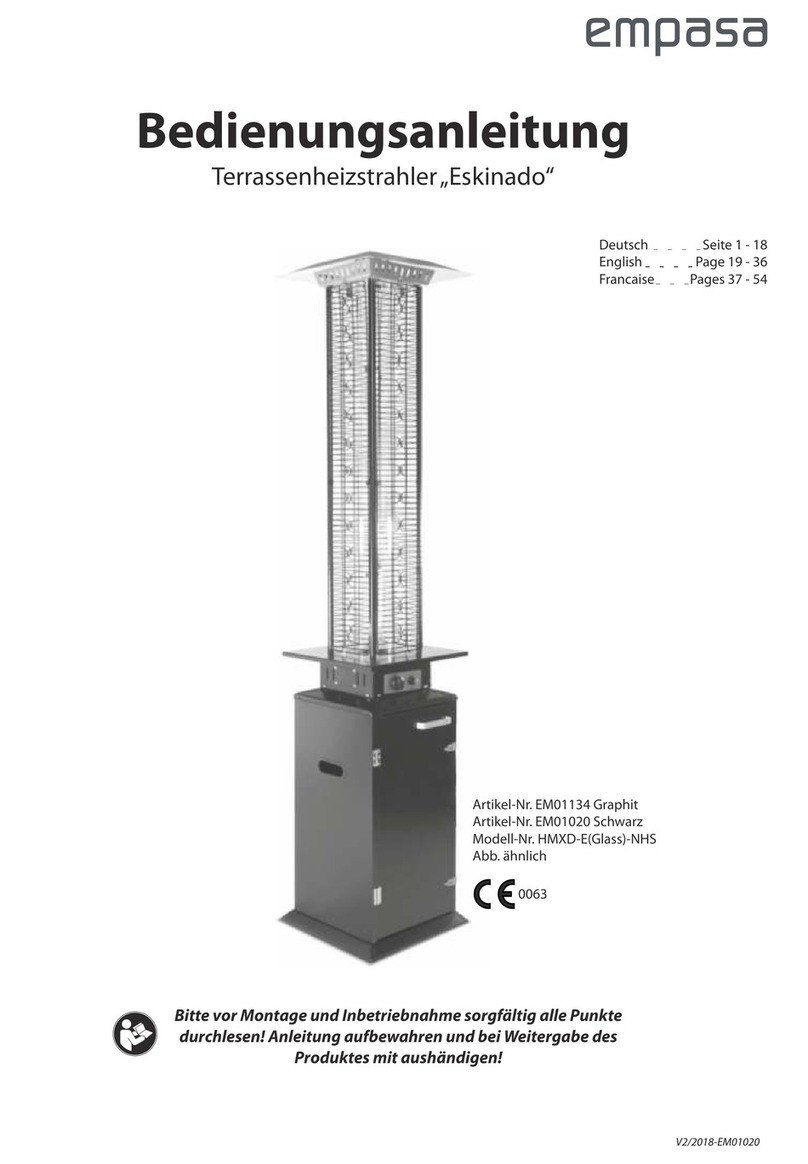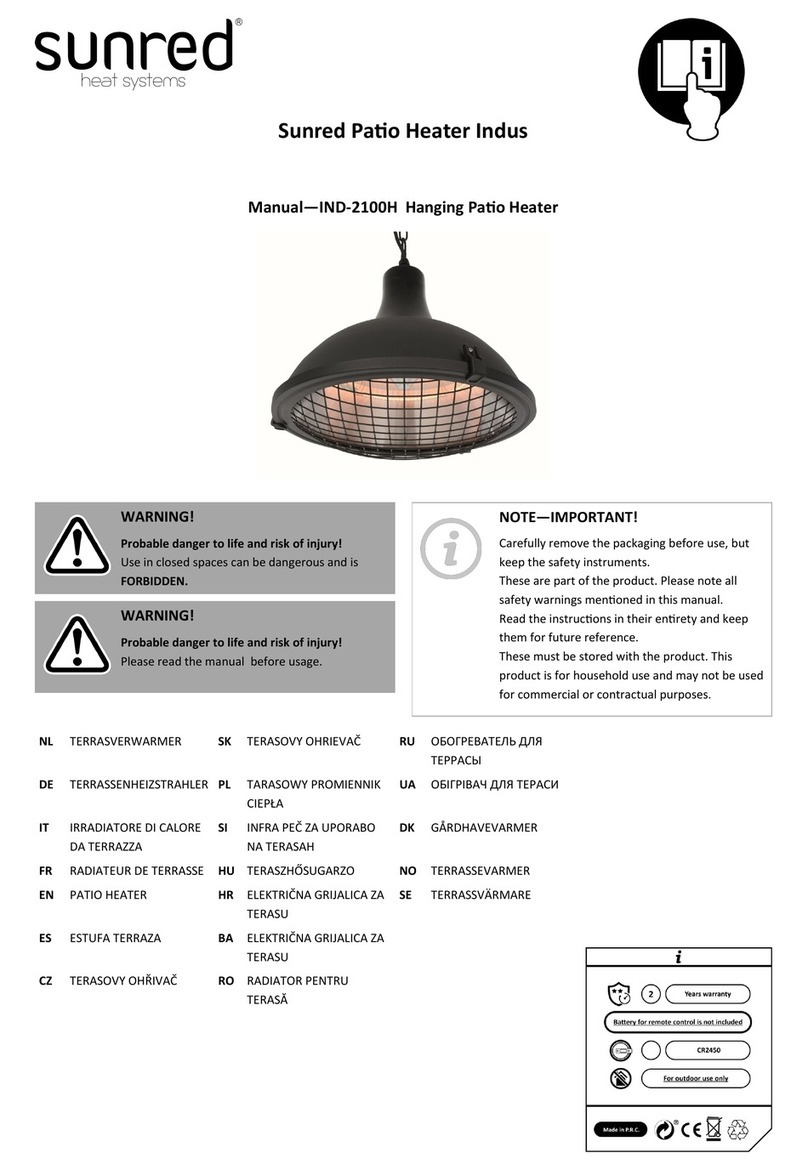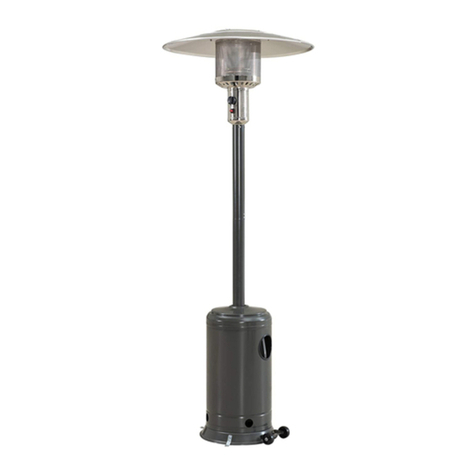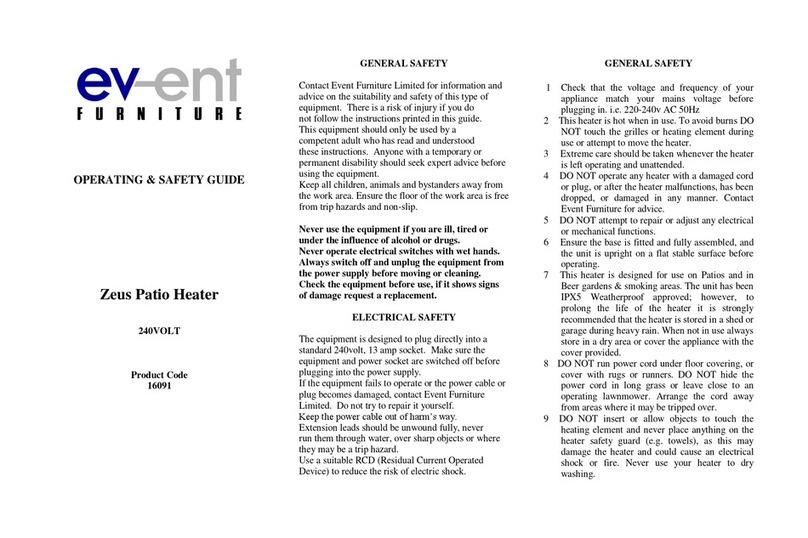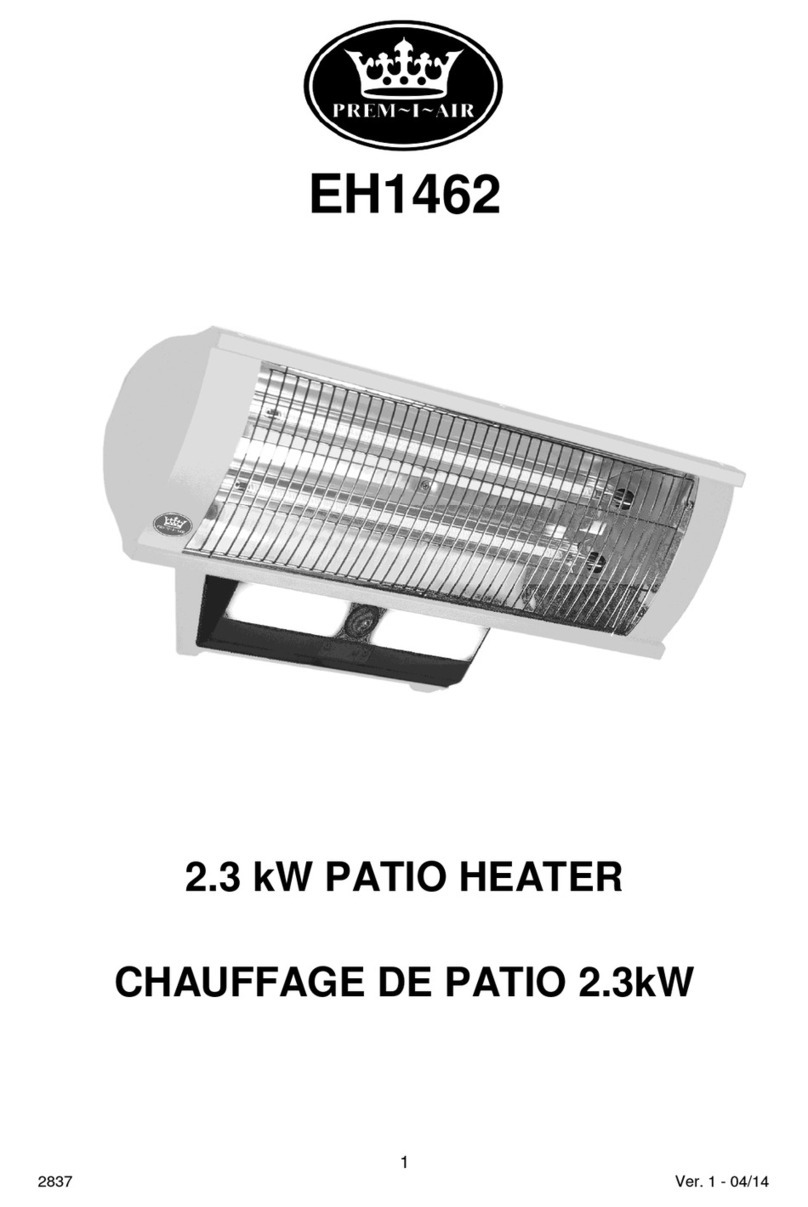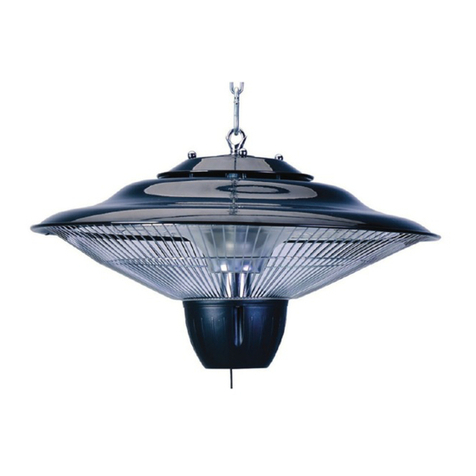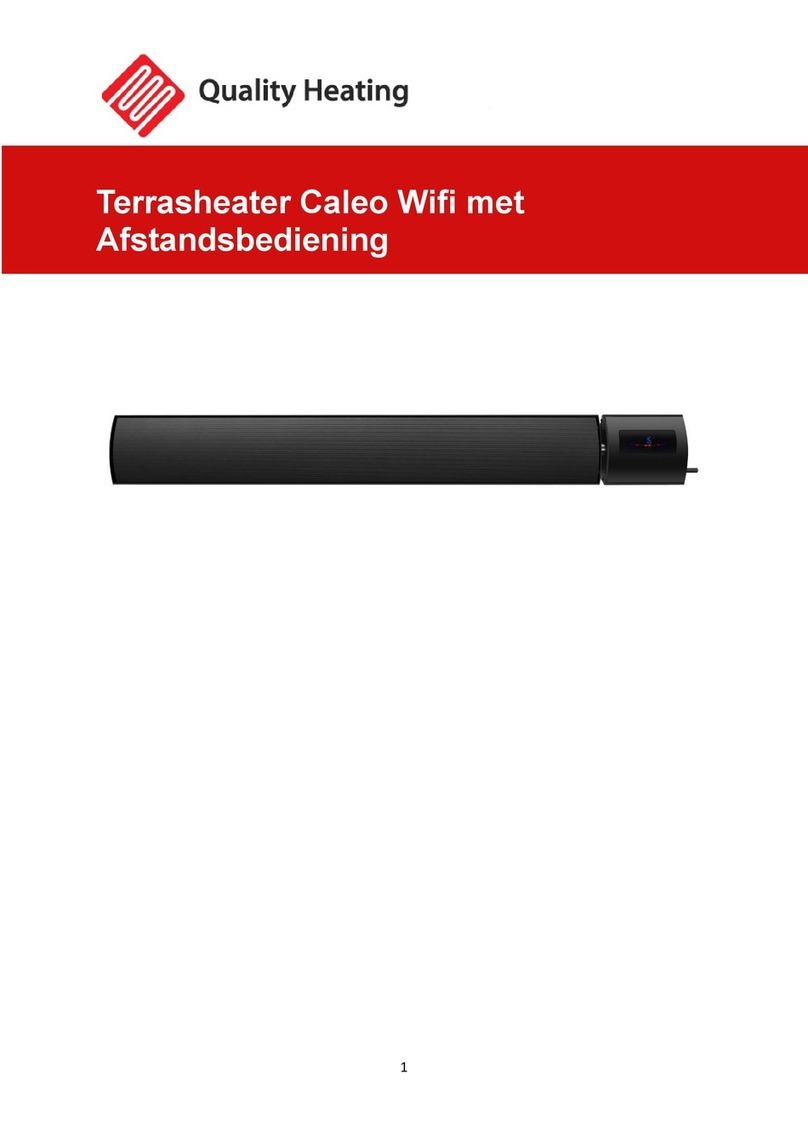© by WilTec Wildanger Technik GmbH Item 63021 Page 4
http://www.WilTec.de
http://www.aoyue.eu 01 2022-1
http://www.teichtip.de
◦A 50 mbar pressure reducing valve is used for butane/propane of category I3B/P(50).
◦We recommend the use of a gas hose in accordance with DIN EN16436:2014.
Safety of use
•Carefully read the instructions to ensure that
◦the gas cylinder valve is only is replaced in a very well-ven-
tilated area and away from sources of ignition such as can-
dles, cigarettes, etc.;
◦the pressure reducing valve seal is checked for proper seat-
ing and readiness for use (see drawing);
◦the ventilation slots in the gas cylinder housing are not
blocked;
◦after use, the gas supply is switched off at the gas cylinder valve;
◦the device is not put into operation when a gas leak occurs or, if it is already in operation,
the gas supply is switched off, the device is checked thoroughly, and any damage is re-
paired before it is used again;
◦the gas hose is checked at least once a month, but every time the gas cylinder is replaced
or after a long period of non-use, and that, if there are signs of breaks, cracks or other signs
of wear and tear, it is replaced with a new hose of the same length and quality;
◦the device is not used in closed rooms; such use is dangerous and therefore PROHIBITED!
•The heater is not suitable for use on recreational vehicles and/or boats.
•The heater should only be installed and connected by a specialist.
•Do not try to modify the device in any way.
•Replace the pressure reducing valve only with a factory-suggested replacement valve.
•Do not use petrol or other flammable vapours or liquids in the device.
•Before commissioning, the entire gas line system, the hoses, the pressure reducing valve, and
the pilot flame/burner must be checked for leaks or damaged areas.
•The leak test should be carried out with a soap solution. Never use an open flame to look for
leaks.
•Do not put the heater into operation until you have checked all connections for leaks.
•Immediately close the gas valve if you smell gas. If the connection between the hose and the
pressure reducing valve is leaking, tighten it again and carry out another leak test. If bubbles
continue appearing, contact the hose vendor. If the connection between the pressure reducing
valve and the valve of the gas cylinder is leaking, loosen it, re-tighten it, and check it again for
leaks. If bubbles still form after several tests, the gas cylinder valve is defective and must be
returned to the seller.
•Do not move the heater when it is in operation. After taking it out of operation, do not move it
until it has cooled down.
•Make sure that the ventilation slots are not blocked. Remove debris.
•Do not paint the hat, the protective grille, or the control panel.
•Check the setting unit, the burner, and the ventilation ducts for cleanliness. If necessary, they
must be cleaned regularly.
•The liquid gas tank must be closed when the radiant heater is not in operation.
•Check the radiant heater immediately if one of the following events has occurred:
◦the heater does not reach the set temperature,
◦the burner makes a knocking noise when it is in operation (but a slight noise when the
burner is switched off is normal),
◦a smell of gas in conjunction with extreme yellowing of the tip of the burner flame.
•The assembly of pressure reducing valve and hose must not be in the path of people. Care
must be taken to prevent someone from tripping over it or over something nearby so that the
hose is not accidentally damaged.
Personal safety
•Do not use the heater indoors; otherwise, there is a risk of property damage or injury.
•Improper assembly, settings, or structural changes can result in property damage or injuries.


